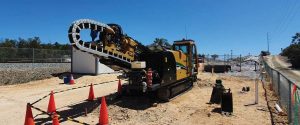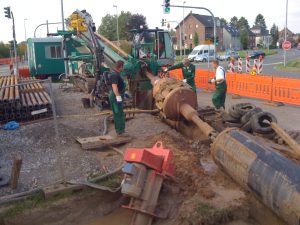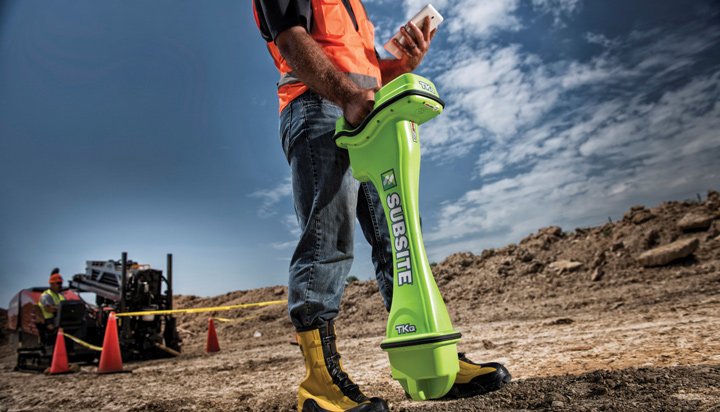Directional Drilling: Navigating Underground Paths
The Evolution of Directional Drilling
Introduction
Directional Drilling: Navigating Underground Paths. Directional drilling has emerged as a revolutionary technique in the field of drilling engineering, enabling the navigation of underground paths with precision and efficiency. Initially developed as a solution for challenging drilling scenarios, directional drilling has evolved into a sophisticated method employed across various industries, including oil and gas, utilities, environmental remediation, and infrastructure development.

Understanding Directional Drilling
Directional drilling, also known as directional boring or slant drilling, involves the process of drilling non-vertical wells to access subsurface reservoirs or targets. Unlike conventional vertical drilling, directional drilling allows engineers to alter the trajectory of the wellbore, steering it along predetermined paths to reach specific targets beneath the earth’s surface.
The Mechanics Behind Directional Drilling
The mechanics of directional drilling rely on advanced drilling technologies and tools. These include rotary steerable systems, measurement while drilling (MWD) tools, and downhole motors. Rotary steerable systems offer real-time control over the wellbore trajectory, allowing engineers to make precise adjustments as drilling progresses. MWD tools provide crucial data on wellbore direction, inclination, and formation properties, facilitating accurate navigation underground. Downhole motors use hydraulic power to rotate the drill bit, enabling drilling in different directions and angles.
Applications of Directional Drilling
Oil and Gas Exploration
One of the primary applications of directional drilling is in the exploration and production of oil and gas reservoirs. In complex geological formations, where conventional vertical drilling is impractical, directional drilling offers a cost-effective solution. By drilling horizontally through the reservoir, operators can access larger portions of the hydrocarbon-bearing formations, maximizing production rates and recovery.
Utility Installations
Directional drilling is widely used in the installation of underground utilities, such as water and sewer pipelines, telecommunications cables, and electrical conduits. This minimally invasive technique reduces the need for excavation and disruption to surface infrastructure. By drilling beneath obstacles such as roads, rivers, and buildings, directional drilling enables the installation of utilities with minimal disturbance to the surrounding environment.
Environmental Remediation
In environmental remediation projects, directional drilling plays a crucial role in the containment and cleanup of contaminated sites. By drilling horizontal wells beneath the affected area, remediation fluids, such as chemicals or steam, can be injected directly into the subsurface, treating the contamination at its source. Directional drilling also allows for the installation of monitoring wells to assess the effectiveness of remediation efforts over time.
Infrastructure Development
Directional drilling is increasingly utilized in infrastructure development projects, such as tunneling, subway construction, and highway crossings. By drilling tunnels or passages underground, engineers can bypass obstacles and sensitive areas, reducing the impact on the surrounding landscape and communities. This method is particularly valuable in densely populated urban areas where traditional excavation methods are impractical or disruptive.

Advantages of Directional Drilling
Minimized Surface Disruption
One of the key advantages of directional drilling is its ability to minimize surface disruption. Unlike traditional excavation methods that require extensive digging and trenching, directional drilling requires only small entry and exit points for the drilling equipment. This reduces environmental impact, preserves natural habitats, and minimizes disruption to communities and infrastructure.
Cost-Efficiency
Directional drilling can offer significant cost savings compared to conventional drilling methods. By avoiding the need for extensive excavation and restoration work, project costs related to labor, equipment, and materials are reduced. Additionally, the ability to access multiple targets from a single drilling location can increase overall project efficiency and productivity. https://drillitco.com.au/directional-drilling-queensland/
Enhanced Safety
Directional drilling enhances safety on drilling sites by reducing the risks associated with surface operations. With fewer workers and equipment operating on the surface, the potential for accidents and injuries is minimized. Additionally, directional drilling allows for the avoidance of hazardous areas, such as unstable terrain or environmentally sensitive regions, further enhancing safety during drilling operations.
Future Trends in Directional Drilling
Technological Advancements
The future of directional drilling lies in continued technological advancements aimed at improving efficiency, accuracy, and environmental sustainability. Innovations such as autonomous drilling systems, advanced geosteering algorithms, and enhanced downhole sensors are poised to revolutionize the industry, enabling even greater precision and control over wellbore trajectories.
Environmental Stewardship
As environmental concerns continue to shape industry practices, directional drilling will play a crucial role in minimizing the environmental impact of drilling operations. Techniques such as closed-loop drilling systems, which capture and recycle drilling fluids, and reduced emissions drilling rigs, are expected to gain prominence, helping to mitigate the industry’s carbon footprint and protect sensitive ecosystems.
Expanded Applications
The versatility of directional drilling opens up opportunities for its expanded use in new applications and industries. From renewable energy projects, such as geothermal and offshore wind installations, to space exploration ventures, directional drilling offers innovative solutions for accessing resources and navigating challenging environments both on Earth and beyond.
Conclusion
Directional drilling has transformed the way we access and utilize subsurface resources, offering a versatile and efficient solution for navigating underground paths. From oil and gas exploration to infrastructure development and environmental remediation, directional drilling continues to drive innovation and progress across diverse industries. As technology advances and environmental considerations become increasingly important, directional drilling is poised to play an even greater role in shaping the future of drilling engineering.

